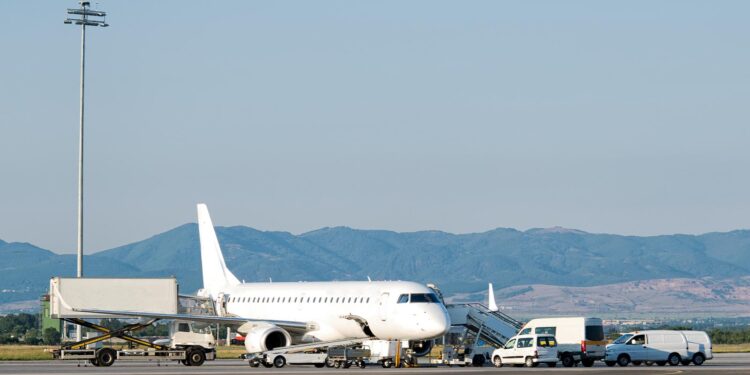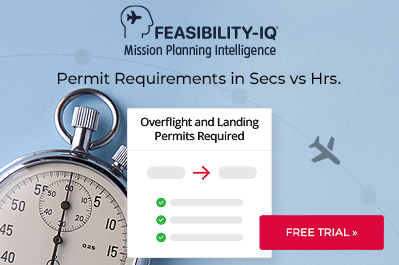Aircraft Weight & Equipment – Impact on Flight Planning: Part 2 – Updating Records

This business aviation blog post continues from our article last week entitled “Aircraft Weight & Equipment – Impact on Flight Planning: Part 1 – Basic Considerations.”
In order to run the most accurate flight plans it’s important to regularly update aircraft weight records. If you add items such as furnishings, avionics, and winglets, this may impact your basic operating weight (BOW), payload capability, and climb/range performance to name a few.
The following is an overview of what you need to know:
1. Updating BOW
Any additions/changes to an aircraft may impact the BOW. It’s important that BOW calculations remain current. Adding hush kits, remounting engines, or installing new winglets, for example, affects BOW and flight planning considerations. For this reason it’s important to weigh your aircraft from time to time to ensure the BOW is spot on. Review weight information you have on file with flight planning/trip support provider every six months or as frequently as needed.
2. Weight issues to be mindful of
Last minute additions to payload – adding a couple of extra passengers for example without updating a flight plan – can lead to issues. Likewise, changing fuel load last minute will impact flight level capability, fuel burn, flight plan routing, and range. Altering fuel load also impacts items such as landing weight at the first destination, second leg capability, North Atlantic Track (NAT) options, and alternate airport considerations. If you encounter potential weight-related issues with a flight plan, contact your flight planning/trip support provider and look at options. Changes to weight, pre-departure, may result in slowing the flight down, changing route or flight level, or adding a tech stop etc.
3. Fuel biases
Fuel biases are normally considered for climb, descent, and cruise as aircraft fuel burns often differ somewhat from the standard. While fuel biases for cruise are usually just a small percentage of standard fuel burn, biases are typically more significant for climb and descent. There are operators who routinely add up to a 30% fuel bias for climb and approach phases as flight plans do not account for all weather considerations, and significant vectoring that may be required due to instrument flight rules (IFR) weather or significant traffic congestion holds on approach. In terms of fuel biases, it’s usually best to start with a certain percentage and then monitor/tweak this as needed.
4. Indicating weights on flight plans
Weights indicated on flight plans typically include the takeoff weight (TOW), landing weight, fuel load, fuel burn, and overall payload. These weights determine takeoff and landing speeds as well as runway distances required. What you won’t see on a flight plan is the maximum takeoff weight (MTOW). An error message, however, may be generated if you plan to operate heavier than your structural limitations. Landing fuel reserves, and reserves to an alternate, are particularly important considerations. When operating to Papeete (NTAA), for example, the nearest practical alternate, other than Bora Bora (NTTB) with its lack of customs, immigration, and quarantine capabilities (thus it can’t be used as an alternate), is about 600 NM away. The same is true for operations to Bermuda (TXKF). It’s critical to ensure that fuel payload to an alternate is correct and aircraft weight/payload impacts this. Note that fuel reserve policies often depend upon country of aircraft registration. In the U.S., for example, standard reserve is 45 minutes. Some countries, however, may require fuel reserves to alternate to be 10-15% of overall estimated fuel burn. Saudi-registered aircraft, for example, must have a 60 minute reserve for travel to airports in Saudi Arabia, but there are no fuel reserve mandates when operating outside the country. Certain operators plan on additional fuel reserves on every flight, as part of their specific operational specifications.
5. Indicating equipment on flight plans
Normally, only navigational equipment and survival equipment needs to be indicated in the ICAO section of a flight plan. Other equipment – such as entertainment systems, galley supplies, and/or a shower – is accounted for within BOW or payload and not included in a flight plan. Weights and equipment not typically listed on flight plans; however, these may be added to a customized flight plan if the operator prefers.
6. Human factor in flight planning
The human factor remains important within the realm of running accurate and appropriately flexible flight plans. Your flight planner will help you anticipate, and avoid, warning areas and issues in terms of weight and equipment. An operator, for example, may have passengers who routinely wish to avoid flight turbulence, and this often involves the need to lower the flight level—which results in increasing the fuel burn, last minute. This all must be accounted for in the flight planning process. Being aware of all operator-specific flight planning considerations helps your flight planning/trip support provider more accurately manage/fine-tune the weight, range, payload, and routing equation.
Conclusion
Always communicate with your flight planning/trip support provider when you have any weight changes to a planned flight – including last minute changes such as adding passengers or tweaking fuel uplifts – so that a new, accurate flight plan can be generated.
Questions?
If you have any questions about this article or need assistance with your flight planning needs, contact me at nathanshelley@univ-wea.com.




